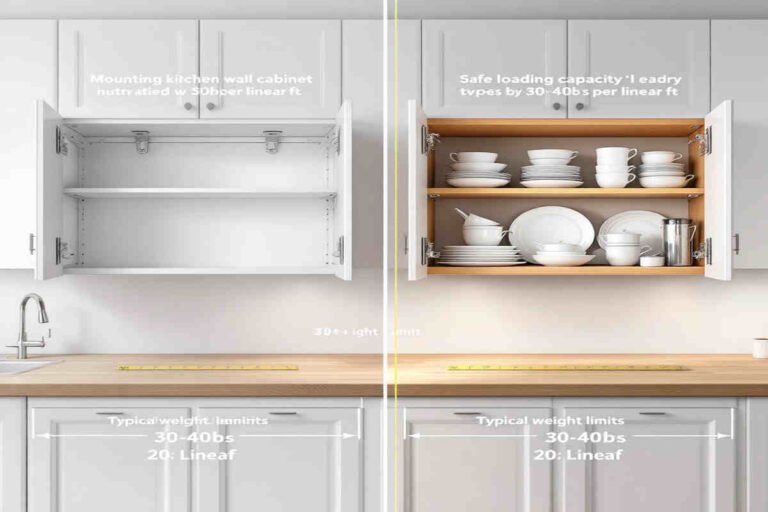Understanding how much weight a home kitchen cabinet can hold is essential for homeowners. Overloading cabinets with heavy cookware, dishes, or pantry goods can lead to structural damage, sagging, or even dangerous accidents. By knowing your cabinet’s weight capacity, you can ensure safety, prolong the lifespan of your cabinets, and organize your kitchen more effectively.
What Is Kitchen Cabinet Weight Capacity?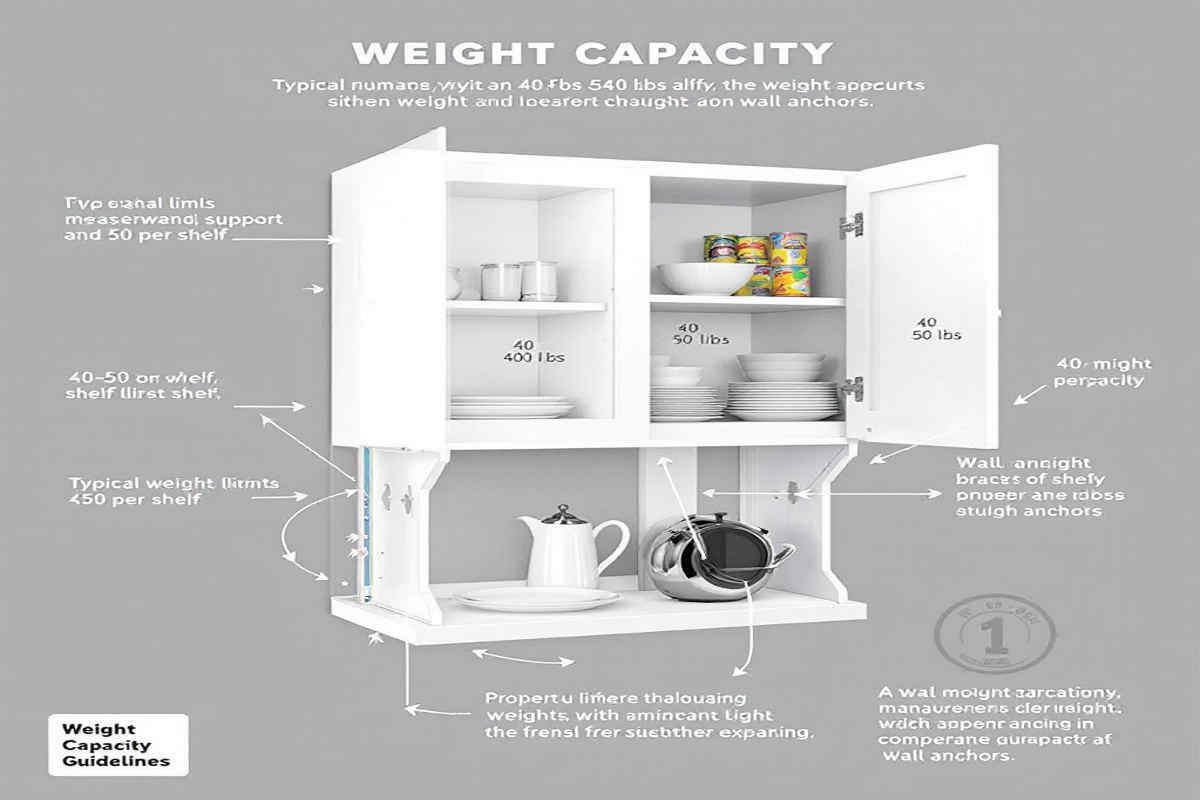
Understanding Weight Capacity
In simple terms, kitchen cabinet weight capacity refers to the maximum weight a cabinet can hold without compromising its structure or safety. This includes the weight of items stored inside the cabinet and any force exerted on it during use.
Average Weight Capacities
The weight capacity of cabinets varies depending on their type, materials, and construction. Here’s a quick breakdown of average weight limits:
- Upper Cabinets: Upper or wall-mounted cabinets typically hold 150-250 lbs. These cabinets are designed to store lightweight items like dishes, glasses, and pantry goods.
- Base Cabinets: Base cabinets, which sit on the floor, are sturdier and can support 300-600 lbs, depending on their material and construction. These suit heavier items like cookware, appliances, and bulk pantry storage.
Why Does Weight Capacity Matter?
Understanding the weight capacity of your cabinets is crucial for several reasons:
- Safety: Overloaded cabinets can collapse, causing injuries or damage to your kitchen.
- Durability: Properly loaded cabinets last longer, as overloading can lead to sagging shelves, loose hardware, and structural weakening.
- Organization: Knowing the limits helps you plan where to store heavy items and keep your kitchen functional.
Industry Standards for Weight Capacity
Many manufacturers adhere to industry certifications like KCMA A161.1 to ensure safety and reliability. This standard tests cabinets’ ability to handle heavy loads and withstand regular use. Cabinets certified by KCMA are rigorously tested to hold up to 600 lbs, making them a reliable choice for homeowners.
Factors That Affect Kitchen Cabinet Weight Capacity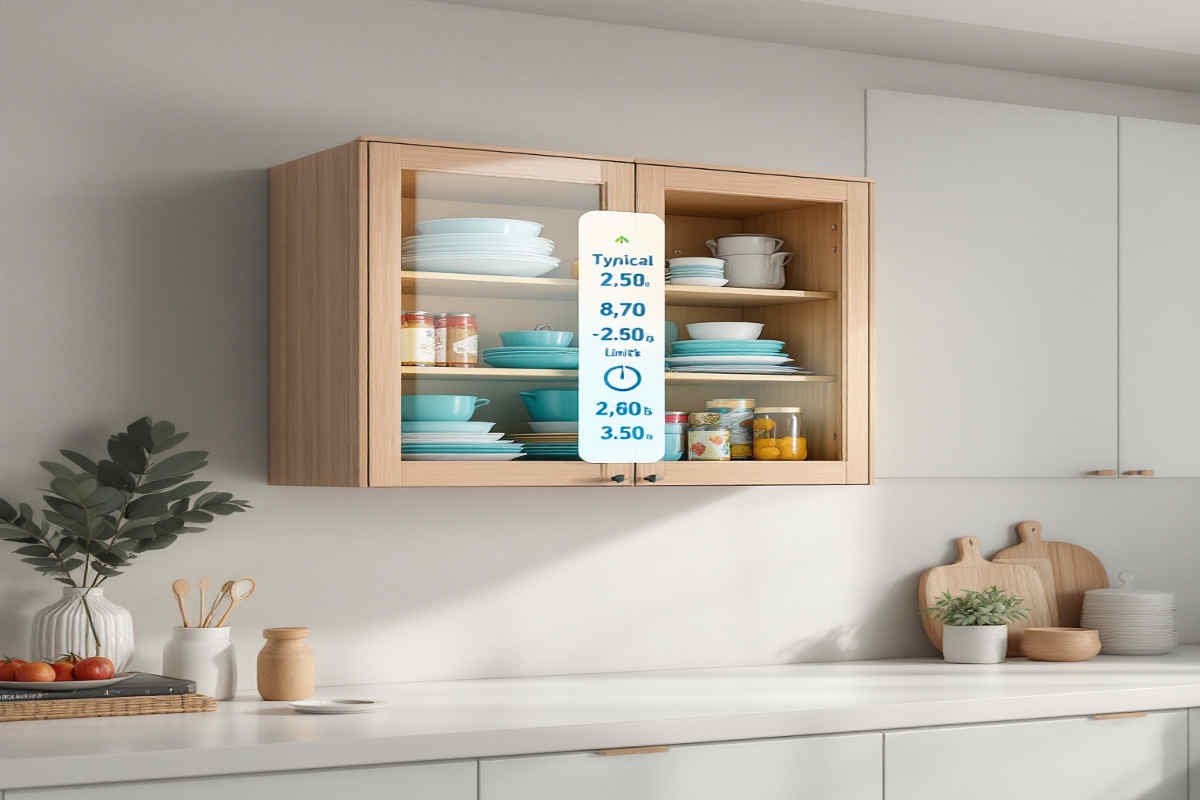
Several factors determine how much weight a kitchen cabinet can hold. Let’s break these down into individual components:
See also ants in my home with salt
Cabinet Material
The materials used to construct a cabinet significantly affect its weight capacity. Here’s how different materials compare:
Material Strength Weight Capacity
Solid Wood Extremely durable, Highest weight tolerance among materials
Plywood is Strong and lightweight, handles heavy loads, slightly less than Wood
MDF/Particleboard Affordable but weaker, Limited capacity, prone to sagging over time
If you’re looking for durability and high weight capacity, cabinets made of solid Wood or high-grade plywood are the best choices.
Construction Quality
The way cabinets are constructed is just as important as the materials used. Key aspects include:
- Joinery Techniques: Cabinets with dovetail or mortise-and-tenon joinery offer better structural integrity than stapled or glued joints.
- Shelf Thickness: Thicker shelves (at least ¾ inch) can handle more weight, reducing the risk of sagging.
- Reinforcements: Cabinets with added brackets or metal reinforcements are more robust.
Hardware and Mounting
Never underestimate the role of hardware in supporting weight. Poor-quality hinges, screws, or brackets can fail even if the cabinet material is strong. Additionally:
- Wall Anchoring: Upper cabinets rely on secure wall anchors for stability. Weak or poorly installed anchors can cause the entire cabinet to fall.
- Mounting Brackets: High-quality brackets distribute weight evenly and prevent stress on the cabinet frame.
Shelf Design and Weight Distribution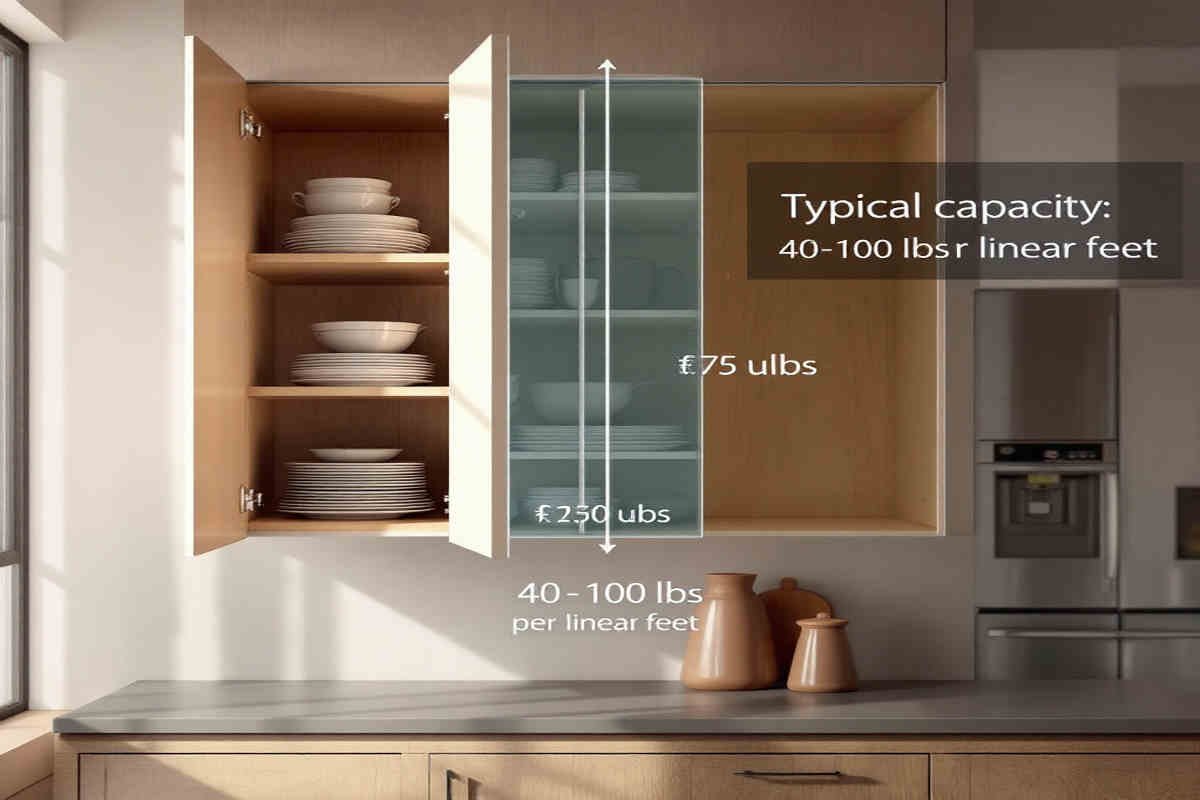
How you load your shelves makes a difference:
See also lighten your home kitchen cabinets
- Even Weight Distribution: Spread heavy items evenly across the shelf instead of concentrating weight in one area.
- Adjustable Shelves: Cabinets with adjustable shelves are more versatile but may require additional support for heavier items.
Cabinet Type
- Wall Cabinets: Designed for lighter loads, wall-mounted cabinets are ideal for dishes, glasses, and pantry goods.
- Base Cabinets are sturdier and handle heavier items like small appliances, pots, and pans.
Industry Standards and Testing for Cabinet Weight Capacity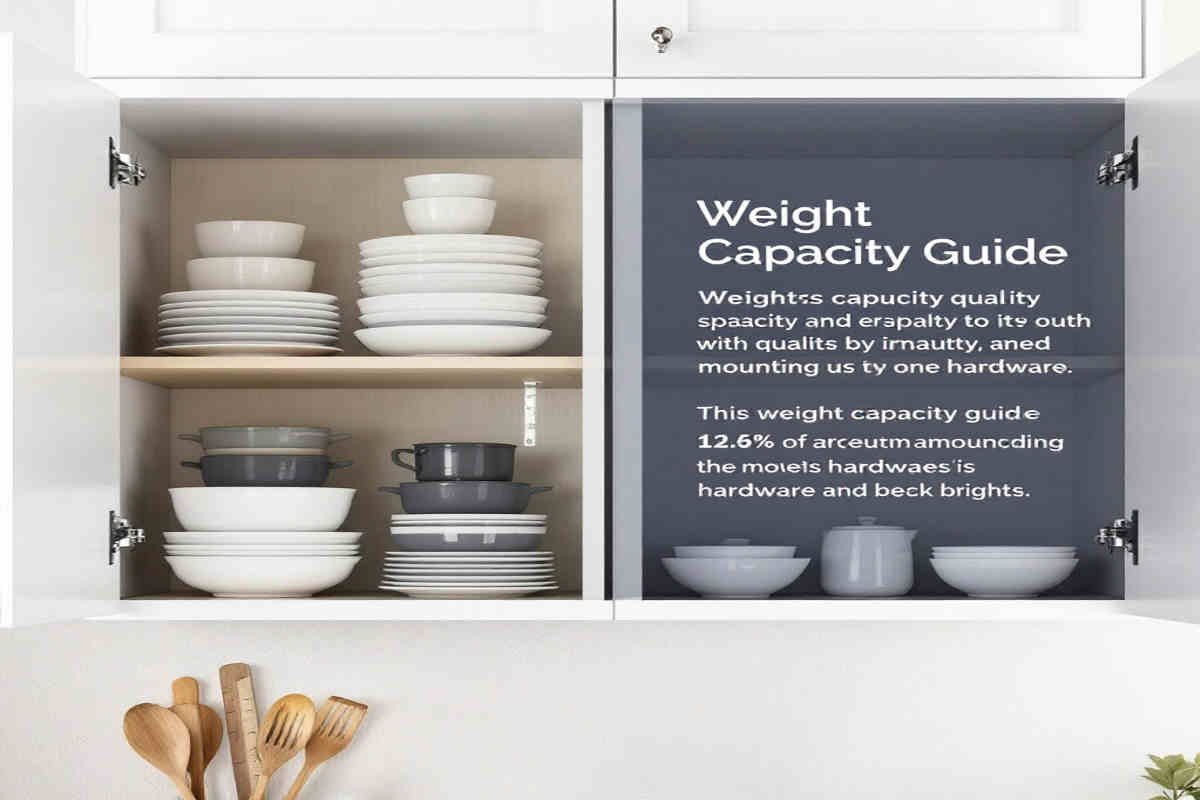
KCMA A161.1 Certification
The Kitchen Cabinet Manufacturers Association (KCMA) provides a rigorous certification process to ensure cabinets meet high standards for durability. Their A161.1 standard includes tests for:
- Static Load Testing: Cabinets are subjected to weights of up to 600 lbs.
- Shelf Deflection Testing: Ensures shelves do not sag under heavy loads.
- Impact Testing: Simulates real-world wear and tear to assess durability.
Why These Standards Matter
Certified cabinets give you peace of mind, knowing they’ve been tested for safety and longevity. This is especially important for families with active kitchens or heavy storage needs.
Practical Tips to Maximize Cabinet Weight Capacity
Want to make the most of your kitchen cabinets? Here are some actionable tips:
- Load Cabinets Safely
- Distribute weight evenly across shelves.
- Store heavier items on lower shelves for stability.
- Reinforce Shelves
- Add metal brackets or supports to increase load capacity.
- Replace weak or sagging shelves with thicker, stronger materials.
- Choose Heavy-Duty Cabinets
- Invest in cabinets designed for high loads if you frequently store heavy items.
- Perform Regular Maintenance
- Check for loose screws or sagging shelves.
- Tighten hinges and brackets as needed.
- Avoid Misuse
- Never climb or stand on cabinets.
- Use step stools or ladders to access high shelves safely.
Signs Your Cabinet Is Overloaded
How can you tell if your cabinets are holding too much weight? Look out for these warning signs:
- Sagging Shelves: Shelves that bow or warp under the load.
- Creaking Sounds: Noise when opening or closing doors.
- Loose Hardware: Hinges or screws pulling away from the cabinet frame.
- Visible Cracks: Damage to the cabinet walls or shelves.
See also home kitchen fire
